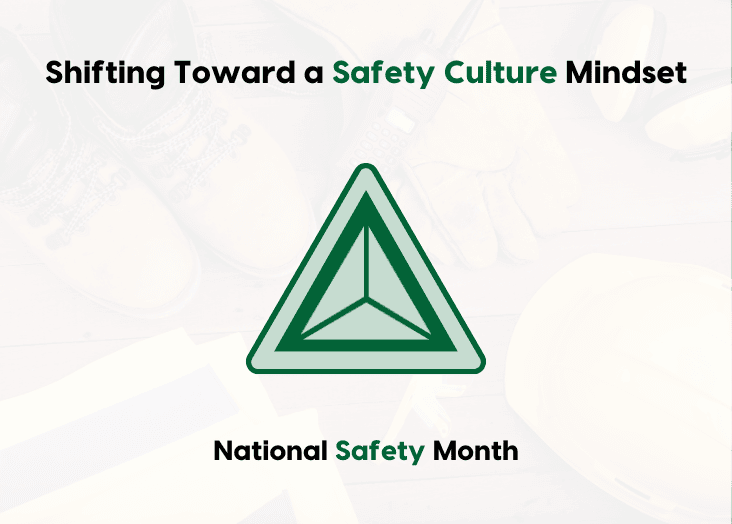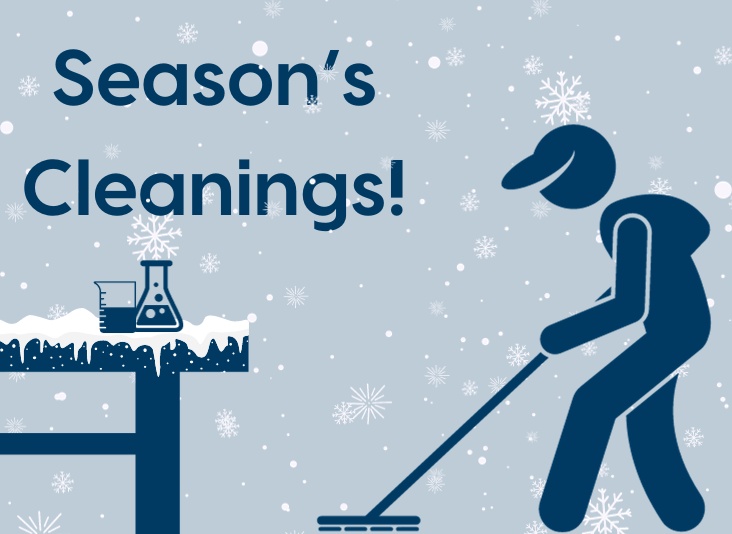Shifting Toward a Safety Culture Mindset
Many environmental, health, and safety (EHS) professionals are realizing that safety is not just about wearing hard hats and utilizing fall protection systems. And since June is National Safety Month, it’s a great time to discuss safety and the ways in which workers and managers alike can stay safe within their workplaces.
Workplace dangers are present, no matter the facility—from mishandled ladders to toxic chemicals and more. Eliminating these risks is crucial, as facility safety and operational success go hand in hand. Organizations that prioritize holistic workplace safety are likely to save time, money, and effort lost to employee or manager downtime—and improve employee morale.
Why Safety Counts
In 2022, 790 workplace deaths were reported across the United States, and 2.6 million worker injuries were reported across the private sector in 2021. A lot of people are getting injured—and dying—from faulty safety programs. This should shock everyone, as most of these accidents are 100% preventable.
On top of the obvious moral impacts, a lack of safety is also extractive to the organization. Worker injuries are costly in many ways; they cause downtime and result in production gaps, not to mention result in fines. Consequently, companies with many worker injuries tend to lose public trust and may struggle to retain employees—no one wants to be scared about their overall health when they get to work.
On the flip side, safety is rewarding, as healthy and happy employees boost morale. On top of this, a higher feeling of physical and mental safety demonstrably results in more productive employees. As such, organizations that prioritize safety often benefit from higher employee retention and satisfaction rates. Maintaining occupational safety, therefore, means your people do their jobs the best and most productive way possible—which will also positively impact your organizational bottom line.
Truly, safety is the backbone of every successful organization. Those that grapple with justifying the cost of “investing” in workplace safety ultimately pay the price in other ways. As such, the question becomes: “How can I pivot my safety program to make it the best, current, and all-encompassing initiative at my facility?” To answer this question, you need to look at your program through two different lenses—and decide how you will choose to approach workplace safety.
Traditional Approach to Safety
Historically, many viewed safety as something like an aggressive, invisible entity that ruled with an iron fist. Managers overseeing safety were slow to communicate expectations or offer training—but quick to punish when things went wrong. EHS departments where this mindset prevailed saw a lack of empathy during regulation enforcement, and leaders, managers, and employees in these departments were often disconnected.
In these scenarios, communications were haphazard, with no clear chain of command. Workers would leapfrog their colleagues or managers and go to the top of the organization as issues unfolded—and citations were issued. Posing questions and asking for help were seen as a sign of weakness and an admission of wrongdoing—meaning workers feared to raise concerns, and a lack of training and education were equated with incompetence.
A safety program in such a facility is scripted by rigid regulations, numbers and compliance—not the real people who these safety standards impact and protect. Here, safety is an afterthought—and indifferent, skeptical, and resistant employees make mistakes, overlook errors, and cut corners. Underreporting is common, and managers don’t have a clear and accurate view into their organizational safety lapses. The old view of safety, while it has its merits, is outdated—a shift from this mindset may be necessary to avoid downstream safety impacts, discussed below.
Downstream Safety Impacts
This EHS approach can have resounding ramifications, including low mental health and morale as well as substandard productivity. Employees may be prone to safety lapses and events that interrupt operations.
In fact, a study of organizational culture across industries found that 56% of employees will withhold ideas out of concern they will not get credit—which delays innovation and discovery. A mere 20% of employees, according to the study, thought that their workplace opinions mattered, meaning most employees will often actually actively hide hazardous situations and concerns.
Managers using a secretive, closed off management style with no insight into the safety landscape at their facility can spell disaster—when safety issues go unnoticed or unraised, they are invisible. That is, until something bad happens, injuring an employee and causing organizational noncompliance. By then, it’s too late to do anything but react. The old view of safety, while it has its merits, is outdated and at times, harmful—a shift from this mindset may be beneficial in many surprising ways.
New Safety Climate
Safety is transitioning into something much more proactive, humane, and flexible. Nowadays, more EHS managers are shifting away from “iron fist” safety into something more current—the role that safety culture creation must play in employee and community engagement.
This updated view of safety emphasizes “a shared belief held by members of a team that the team is safe for interpersonal risk taking.” The idea is that when a company allows employees to be valued as individuals, they are free to ask questions and make mistakes. This reduces workplace stress and thus increases workplace safety, as employees are comfortable and engaged.
This involves a culture in which employees are free to:
- Give and receive feedback
- Raise issues and concerns
- Disagree
- Ask for clarification
- Ask tough questions
- Ask for help
- Offer solutions to problems
- Admit errors
People, Processes, and Mindset = Safety Culture
Adopting the right mindset and related methodologies is like finding a key that unlocks innovative solutions and team problem-solving. It’s the sort of breakthrough that we only tend to hear about while at team leadership conferences—but don’t see in the real world.
Full safety of mind and body for the modern workplace—indoors, outdoors, at home, or wherever—is reliant on people properly interacting with workplace programs. Creating a safety culture—including the prioritization of psychological wellbeing—demands participation across the board, from the line worker to the CEO. It’s a program every individual must work towards.
Luckily, there are proven ways to create this safety culture mindset with your team, to set you up for long-term safety success in your lab, factory, or whatever workplace you do business in. A major stumbling block to this safety transformation, however, is the traditional punitive, top-down approach to safety that rules with an iron fist. Below, we will explore the ways to switch from the old wave safety to a new safety culture mindset.
Improved Safety via New Safety Ideals
One way to more effectively promote safety is through the creation of a full, self-supporting safety culture throughout your operations. This may require you to completely overhaul your overall approach to safety—making it more collaborative, positive, supportive, and people-centric than ever before.
While such a safety culture is often discussed, it isn’t often actualized. Creating a smart, data driven safety culture that protects people and supports success often requires a major pivot from the old ways of safety. Adopting a safety culture that embraces positivity is a step in the right direction to increasing the impact of your organizational safety programs. This approach is more than just the hard hats and safety signs and so on—it’s about the results that come from a holistic and dynamic modern safety culture.
Above all, it is about everyone in the organization winning the game—by keeping themselves and others as safe as possible.
Interested in learning more about what it takes to have a safe facility—and what Triumvirate Environmental can do to help? Contact us today.






